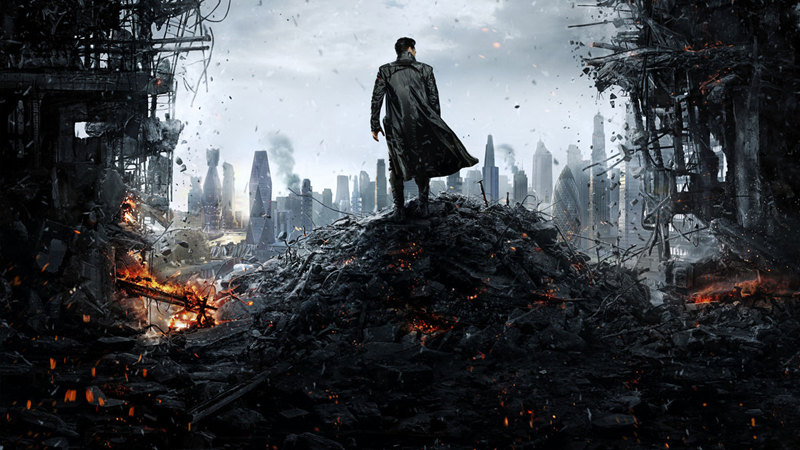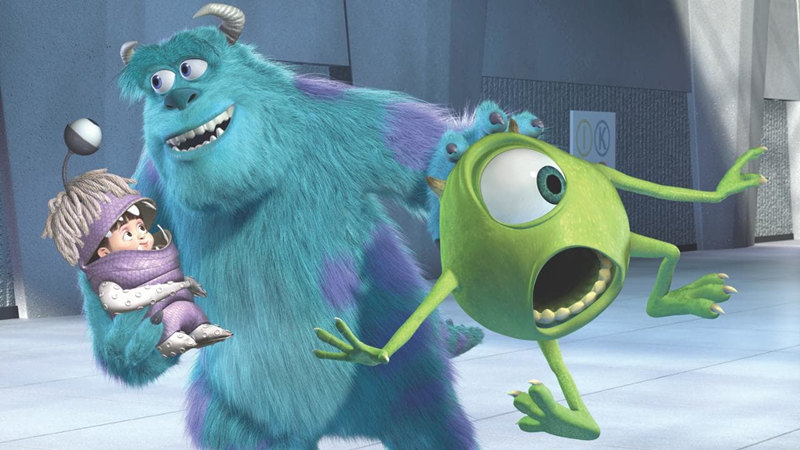Studios usually know what they’re doing, and even when they make mistakes, they’re usually quick to catch on to them. Certainly, that’s the case with Warner Bros. Take, for instance, “The Reaping.” The studio originally scheduled it for release in 2006 but postponed the première by almost a year. Why, I don’t know. Often it’s because studios are not sure how good a film is, how well it will do, and want additional time to plan their ad campaign or their distribution. In the case of “The Reaping,” I suspect WB may have viewed it the same way I did, negatively, and wondered if it was worth the bother. As it turns out, the film did modestly well at the box office despite critics like me not liking it.
The movie’s biggest asset is its star, Hilary Swank. The movie’s biggest liability is its story, a silly horror affair. Swank, a fine actress, does her best to cope, but it seems like a hopeless, almost demeaning situation, a little like watching those old television commercials with Laurence Olivier hawking cameras or Orson Welles selling wine. Or, more appropriate to our subject matter, Richard Burton sweating his way through “Exorcist II: The Heretic.”
In “The Reaping” Swank plays Katherine Winter, an LSU professor who specializes in debunking so-called miracles and superstitious hoaxes. Well, you can already see where that plot thread is going to wind up. Everybody likes to root for the supernatural. We all want to believe in things that can’t be seen or explained, and we’d all like to see the naysayers proved wrong just out of spite, whether or not we actually believe in the subject. It’s like those “National Geographic” shows on cable about ghosts or ESP or whatever, where they spend the whole time interviewing about 800 believers who have seen and experienced such phenomena, and then at the very end of the program they call upon the editor of “Skeptic Magazine” who, without a shred of contradictory proof, simply says no, they’re all lying or hallucinating, and the program concludes, therefore, that none of the paranormal stuff is real. I mean, we want to see the smart-aleck skeptic get his comeuppance, right? Maybe a flying saucer will land on his lawn or something.
As with most of these semireligious horror stories, the main character in “The Reaping,” the professor, was once a devout Christian who lost her faith in God. In her case, this happened when fanatics murdered her husband and daughter in the Sudan a few years earlier. Now, she has nightmares about the events and believes in no kind of superstitious mumbo-jumbo. So when an old friend, Father Michael Costigan (Stephen Rhea), calls to warn her that her life may be in danger from some unknown evil, she shrugs it off. Priests are always getting caught up in these things, aren’t they? You’d think we were still living in the Dark Ages watching these horror-movie plots, although a lot of churches probably invite screenwriters to use them in their scripts because of their elaborate church rituals, dark cathedrals, bizarre statuary, and the like. I know I was always a bit intimidated going to funerals at the local Catholic church when I was a kid: The dusky corners and moldy smell of incense in the huge, old-fashioned chapel sort of scared me. As I suppose was the intent of churches in the old days, when they needed to keep some degree of control over their congregations.
Back to our story: Katherine gets a request from a man, Doug Blackwell (David Morrissey), to investigate a mysterious occurrence in his little hometown of Haven, where he teaches grade-school science. The town is way back in the Louisiana bayous, and the nearby river has turned red. The townspeople, Bible-thumpers all, believe that the river has turned to blood and that the simultaneous death of a boy in the area are the beginnings of the Old Testament plagues all over again; you know, the ones God visited upon Egypt when Pharaoh wouldn’t let the Hebrews out of the country. Against her better judgment, Katherine and her investigative assistant, Ben (Idris Elba), agree to check it out.
To the film’s credit, director Stephen Hopkins (“Nightmare on Elm Street: Dream Child,” “Predator 2,” “Lost in Space”) shot mostly on location in various places around Texas and Louisiana, so the film looks authentic in detail. Now, if only the filmmakers had had a more original concept to work with….
True to form, when they arrive in Haven, they discover everybody there acts weird; they find a hurricane destroyed the first, older town about a century before, leaving only ruins and a mausoleum out in the countryside; they spot a strange little girl, Loren (AnnaSophia Robb), wandering in the swamp; and Blackwell arranges lodging for them in his decaying Southern mansion. We actually get to experience a dark and stormy night with the protagonists in this crumbling old house. Depending on your tolerance for these things, it’s either silly or insufferable.
Then the rest of the plagues follow: frogs raining from the sky, flies covering the food, cattle going mad and attacking cars, locusts assailing everybody, etc. Some days, nothing goes right. People in the film move almost in slow motion as the plot plods along toward its inevitable conclusion.
The longer “The Reaping” is on the screen, the cornier and more predictable it becomes, with the usual Medieval chants playing in the background. When it was over, my only question was, “What the…?” Even within the context of its own fantastical world, the story made no sense.
But I did like the bugs.
Video:
Although Warners retained the film’s theatrical aspect ratio, 2.40:1, and although they enhanced the transfer anamorphically for optimum playback on widescreen TVs, they didn’t use their usual high bit rates to reproduce it. As a result, the image not only looks a bit dark, soft, and fuzzy at times, it also seems washed out in appearance, with colors not as deep as they could be and black levels not always too solid.
Audio:
The Dolby Digital 5.1 sound is quite good. The dynamics and impact are strong, the bass is deep, and the filmmakers’ use of the surrounds for all kinds of creepy noises couldn’t be better. Of course, regular Dolby Digital lacks the ultimate clarity of Dolby TrueHD or Dolby Digital Plus, but this is plenty good enough without a direct comparison to point up its minor weaknesses.
Extras:
The primary extras are four making-of featurettes. The first is “Science of the 10 Plagues: The Search for Scientific Explanations,” sixteen minutes on the possible scientific reasons for the Biblical plagues. Then there’s “The Characters: Cast Members Reflect,” seven minutes on, well, the characters in the movie; followed by “A Place Called Haven: Explore This Exotic Landscape,” five minutes on the setting; and “The Reaping: The Seventh Plague: Those Creepy Bugs,” about a minute with the insects they used in the picture.
In addition, there are twenty-four scene selections, but no chapter insert; English, French, and Spanish spoken languages and subtitles; and English captions for the hearing impaired; a series of trailers at start-up for other WB titles; and a handsomely embossed slipcover.
Parting Shots:
I suppose if you’ve got to make another gothic, quasi-religious horror flick, you might as well borrow from the best since there is so little left to say in the genre. “The Reaping” sneaks some of its better ideas from “The Exorcist,” “The Omen,” “The Seventh Sign,” “Rosemary’s Baby,” “Wicker Man,” and, needless to say, the Bible, among others. Unfortunately, the bits and pieces of other movies do not make “The Reaping” anywhere near as good as its sources. In fact, the borrowings only serve to remind us by comparison how much better the originals were.


